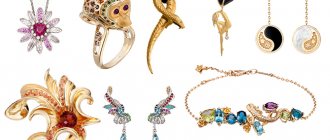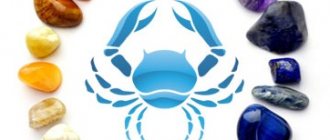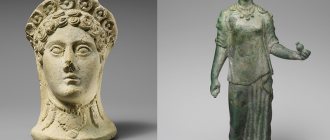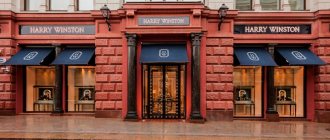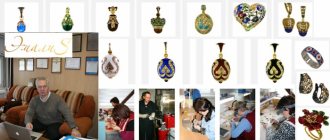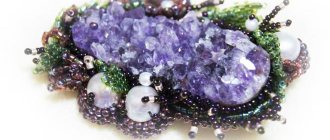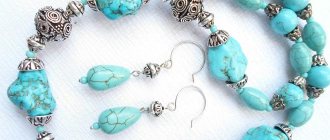The end of the 19th century summed up romanticism and neo-styles: they were tired of them.
The public was hungry for something new, and it came in the early 90s of the 19th century. The new style was first greeted by France and Germany, and then it spread almost everywhere - in England, Belgium, Austria, Scandinavia and Russia. So, Art Nouveau (that was it) appeared as a response to the satiety of previous neo-styles. Art Nouveau (or Art Nouveau, as the term is sometimes “transliterated” literally from Art Nouveau) dominated the period from 1890 almost until 1914. , Titanic can perhaps be considered a style guide ; scoffers may want to rewatch The League of Extraordinary Gentlemen .
Art Nouveau (Art Nouveau - new art, French) embraced many types of creativity, but in architecture and decorative arts it confidently took the lead.
Movements of Art Nouveau style
In Germany it was called “Jugendstil” (Jugend - youth, German);
in Russia - “modern” (from the French moderne - newest, modern). Art Nouveau jewelry has “geographical” features. French Art Nouveau jewelers, for example, Lucien Gaillard, Georges Fouquet, are masterfully asymmetrical, while the “German mind” (Wilhelm Lucas von Cranach) gravitates towards symmetry. The palette is also different - in Russia it is, perhaps, different than in Europe. So currents can probably be determined geographically.
Art Deco
Period: 1920-1930s
Character traits:
- symmetry, clear geometry
- Precious stones are coming back into fashion: diamonds, rubies, sapphires, emeralds
- stone carving
- Indian, Islamic, Persian, oriental motifs
- use of different cuts
- varnish replaced labor-intensive and expensive enamel
- cultured pearls
The Art Deco style received its name in 1925 after the Exposition International des Arts Décoratifs et Industriels Modernes. The exhibition took place in Paris and showed important world achievements. This fact demonstrates the essence of the style - the unification of art and industry. The design was dominated by geometry and symmetry
Jewelry art echoes trends in fine art: cubism, expressionism, futurism. Art Deco reveals the aesthetics of the Jazz Age against the backdrop of post-war Europe and the Roaring Twenties of the United States.
Fashion also demanded a rethinking of jewelry. Working on an equal basis with men (and sometimes instead of them) forced women to abandon corsets, fluffy dresses and long hemlines. After the war, ladies were reluctant to return to the past and paid attention to the clothes of Paul Poiret and Coco Chanel - simple and elegant. This freedom allowed women to engage in sports and leisure activities previously unavailable: enjoying cocktails and cigarettes, playing golf and tennis, driving, dancing until dawn - all this was part of the new woman.
Jewelry houses interpreted Art Deco in their own ways, emphasizing different design themes of the time. The appeal of European and American designers to the cultures of the south and east is noticeable.
The most prominent creators of jewelry were Cartier and Van Cleef & Arpels. Diamond bracelets, ruby brooches and sapphire earrings expressed the wealth and free attitude to money of the 1920s.
Characteristic decorations:
Egyptian revival. Among the influences of other cultures, Ancient Egypt stands out the most. Familiar elements (scarabs, pyramids) and color combinations of lapis lazuli with gold, carnelian, and turquoise were used in jewelry.
The 1930s were characterized by voluminous brooches and wide bracelets decorated with diamonds.
Transformable jewelry: earrings with removable elements, double clips, dress clips, fur clips.
Long sautoirs, tassel necklaces, geometric pendant necklaces.
Rings with a massive set, decorated with precious stones: a large central insert surrounded by smaller ones.
Formation and features of the Art Nouveau style (Art Nouveau)
At first, Art Nouveau “fed” Gothic (the predominance of vertical compositions, a frequent motif of the lily as a sign of detached sophistication; the image of a thin-armed melancholic maiden, often with closed eyes).
Art Nouveau was also influenced by the Cretan-Mycenaean and Etruscan ancient cultures, and the small plastic arts of Ancient Egypt . The ornamental series borrowed elements from Celtic things (yes, Celtic “braids” are not only tattoos) and handwritten book patterns.
But. Having rejected copying, modernity carried out a synthesis, deeply comprehending the previous experience of beauty. Compare the Celtic corner design and some brooches of the jeweler Wilhelm Lucas von Cranach . These are clearly not alien images.
Penetration of Japanese “natural” style into European Art Nouveau
Just then, the Land of the Rising Sun finally reached Europe (shoutout to the Japanese artists Hokusai , Hiroshiga , and not only them), and this unexpectedly influenced the new artistic style of Europe. It’s as if a certain filter is hidden inside the Japanese artist. Reality, passing through the narrow sieve of Japanese eyes, appears as an exquisite dance -
water and flowers,
rocks and birds,
peaks in the snow and mysterious animals.
This is now Fuji, chrysanthemum, carp and crane for a European - a common artistic place. Japanese. But there was a time when the rose of Europe first gave way to the chrysanthemum - on the artist’s chest (let’s dream: in the buttonhole of his tailcoat!). Waves, streams of rain, foliage and stems of bamboo, the color of sakura, the bends of algae and schools of fish - all this was also included in the system of Art Nouveau ornaments.
LiveInternetLiveInternet
Quote from Maya_Peshkova's message
Read in full In your quotation book or community!
Art Nouveau style (Art Nouveau). Part 2. Jewelry art
Art Nouveau (from the French moderne - modern) is an artistic movement in architecture, applied and fine arts, most widespread in the last decade of the 19th - early 20th centuries (before the start of the First World War).
The end of the 19th century summed up romanticism and neo-styles: they were tired of them. The public was hungry for something new, and it came in the early 90s of the 19th century. The new style was first greeted by France and Germany, and then it spread almost everywhere - in England, Belgium, Austria, Scandinavia and Russia.
The distinctive features of Art Nouveau are the rejection of straight lines and angles in favor of more natural, “natural” lines, interest in new technologies (for example, in architecture), and the flourishing of applied art. Art Nouveau sought to combine the artistic and utilitarian functions of the works created, to involve everything in the sphere of beauty spheres of human activity.
In different countries, the style had different names: in France - “art nouveau” (French art nouveau, lit. “new art”) or “fin de siècle” (French “end of the century”); in England - “modern style”; in Germany - “Jugendstil” (German Jugendstil - “young style” - after the name of the illustrated magazine Jugend founded in 1896); in Austria, Czechoslovakia and Poland - “secession” (German Secession - “separation, separation”); in Scotland - “Glasgow style”; in Belgium - “style of twenty” (from the name of the “Society of Twenty”, created in 1884); in Italy - “liberti” (“Liberty style”); in Spain - “modernismo” (Spanish: modernismo); in the Netherlands - "Nieuwe Kunst"; in Switzerland - “spruce style” (style sapin); in the USA - “Tiffany” (named after L. K. Tiffany); in Russia - “modern”.
For jewelry art of the Art Nouveau era, the most characteristic features of the style are: the use of smooth, natural lines imitating the shape of a leaf or wave, the avoidance of straight geometric shapes, and the use of muted pastel and matte colors and materials.
Without abandoning gold, the Art Nouveau jewelry style highlighted semi-precious opaque stones such as opal, moonstone, turquoise, as well as pearls, enamel, and ivory among its favorite materials.
Diamonds and other precious stones are used in Art Nouveau products primarily as auxiliary decorative elements. Floral, zoomorphic (dragonflies, lizards, bats, butterflies) and fairy-tale (nymphs, fairies) motifs prevail.
Among the most prominent jewelers of the Art Nouveau era are Georges Fouquet, Tiffany and Rene Lalique
At first, Art Nouveau “fed” Gothic (the predominance of vertical compositions, a frequent motif of the lily as a sign of detached sophistication; the image of a thin-armed melancholic maiden, often with closed eyes).
But. Having rejected copying, modernity carried out a synthesis, deeply comprehending the previous experience of beauty. Compare the Celtic corner design and some brooches of the jeweler Wilhelm Lucas von Cranach. These are clearly not alien images.
Art Nouveau was also influenced by the Cretan-Mycenaean and Etruscan ancient cultures, and the small plastic arts of Ancient Egypt. The ornamental series borrowed elements from Celtic things (yes, Celtic “braids” are not only tattoos) and handwritten book patterns.
Just then, the Land of the Rising Sun finally reached Europe (shoutout to the Japanese artists Hokusai, Hiroshiga, and not only them), and this unexpectedly influenced the new artistic style of Europe. It’s as if a certain filter is hidden inside the Japanese artist. Reality, passing through the narrow sieve of Japanese eyes, appears as an exquisite dance -
The female silhouette of a typical representative of the Art Nouveau era snaked, reminiscent of the Latin S. Art Nouveau evening dresses became unusually impressive - due to asymmetry and mannered curved lines. Of the jewelry in the Art Nouveau era, necklaces are especially popular - necklaces with “fringe” (pearl or diamond), ideal for a wedge-shaped neckline. Wide “collars” strewn with stones came into fashion; graceful hoops with a stone placed down on a long shaft. Hair was decorated with exquisite combs with gold and stones.
Jewelry art was a “beacon” of the new style. Of course, you can’t do without architectural modernism, but, as a rule, a brooch is created faster than a mansion.
The universe of floral (floral in French - floral) Art Nouveau - emerald lizards and snakes, motley-winged dragonflies and butterflies, sunflowers, reeds, irises and orchids...
The “marker” of modernity is a widely and whimsically curved line (in Europe called the “blow of the whip”). It’s strange: in Japanese art, such lines depicted waves of fog, the movement of algae, and jets in a backwater;
Emancipation allowed the naked fairies of Lalique to multiply and inhabit jewelry. The master inspired a “golden dream” - perhaps not for all of humanity, but for an individual (rich) person. Languid female heads and figures with long hair and flexible arms in “flying” sleeves - perhaps they are the ancestors of all Disney princesses. The smooth fluidity of asymmetrical forms, the subtle construction of the composition, the combination of glossy enamels and green, lilac, blue, white, red stones - a worthy frame for a miniature lady made of gold.
And in the jewelry of real women made of flesh there are a lot of stones (pearls, opals, rubies, demantoids, amethysts, chrysoprase, mother-of-pearl). Not expensive, but decoratively and coloristically suitable gems were selected.
The pressure of high jewelry has finally broken through the wall of academic snobbery. The Society of French Artists opened an applied arts section. Personal exhibitions of jewelry artists began, catalogs began to be published in magazines, and museums began to purchase collections. The World Exhibition, held in Paris in 1900, gave the Maestro-Jeweler a standing ovation.
Among the “fathers” of Art Nouveau, one cannot fail to mention Rene Jules Lalique (as, of course, Alphonse Maria Mucha, Georges Fouquet, Charles Robert Ashby and many other masters). In just over twenty years of the Art Nouveau period, René Lalique greatly changed the foundations of the jewelry world. He introduced the motif of a naked female figure. Lalique wonderfully combined horn, mother-of-pearl, glass, and ivory with enamel and pearls, precious and ornamental stones. The king of French glass, he developed a method of injection molding (the incomparable Lalique vases). After working in the houses of Cartier and Boucheron, he opened his own jewelry workshop. Designing jewelry for Sarah Bernhardt added to the maestro's fame.
Lucien Gaillard, Alphonse Mucha, Georges Fouquet, Robert Ashby glorified this style. The products of the jeweler Georges Fouquet embodied the ideas of the famous Alphonse Mucha; Fouquet worked from his sketches. Alphonse Mucha and Georges Fouquet designed an Art Nouveau collection for the Paris World Exhibition in 1900. The products did not resemble traditional jewelry designs of the time, but the public was very interested. The Fouquet Room at the Exhibition was a huge success. It was a magnificent tandem, and when the time came for Georges Fouquet to open his own store, Alphonse Mucha, of course, decorated it. Separate posts are dedicated to them
One of the representatives of modern jewelry in London was Charles Robert Ashby. His work, especially the cutlery, simply immerses you in the atmosphere of Tolkien’s film epic (elven line).
In Russia before 1917, famous artists also worked who made jewelry in the Art Nouveau style. Among them was the famous Carl Faberge:
Since the beginning of the 20th century, floral modernism has been on the decline. Manifestations of this style can be found before 1914, but the form is no longer so sophisticated; smooth lines have been replaced by geometric decor. The floral flow of Art Nouveau gave way to the geometric one. Late Art Nouveau already has features of constructivism and a new style with an interesting jewelry embodiment - Art Deco.
https://juvelirum.ru/
https://guity-novin.blogspot.com/2014/03/chapter-75-history-of-jewellery-design.html
Hardy W. Guide to Art Nouveau Style. Rainbow, 2008
Series of messages “Jewelry Art”:
Part 1 - Jewelry art of the Islamic East Part 2 - Louvre: decorative and applied arts (4a) crown treasures ... Part 36 - The most expensive Faberge Easter egg and its forgotten creator Part 37 - The most expensive Easter eggs Part 38 — Art Nouveau style (Art Nouveau). Part 2. Jewelry art
Series of messages “Modern Style”:
Part 1 - Jewelry art of designer Rene Lalique Part 2 - Jewelry fantasies of Salvador Dali ... Part 5 - Man of the Art Nouveau era architect and jeweler Joseph Hoffman Part 6 - Art Nouveau style (Art Nouveau) Part 1. Architecture Part 7 - Art Nouveau style (Art Nouveau). Part 2. Jewelry art Part 8 - Jewelry art from Lucien Falize
Art Nouveau style - manifestation in fashion and jewelry
The female silhouette of a typical representative of the Art Nouveau era snaked, reminiscent of the Latin S. Art Nouveau evening dresses became unusually impressive - due to asymmetry and mannered curved lines. Of the jewelry in the Art Nouveau era, necklaces are especially popular - necklaces with “fringe” (pearl or diamond), ideal for a wedge-shaped neckline. Wide “collars” strewn with stones came into fashion graceful hoops with a stone placed down on a long shaft. Hair was decorated with exquisite combs with gold and stones.
Jewelry art was a “beacon” of the new style. Of course, you can’t do without architectural modernism, but, as a rule, a brooch is created faster than a mansion.
Examples of antique jewelry from the Art Nouveau period:
Art Nouveau: flowers, fairies, curved lines and gems
The universe of floral (floral in French - floral) Art Nouveau - emerald lizards and snakes, motley-winged dragonflies and butterflies, sunflowers, reeds, irises and orchids...
The “marker” of Art Nouveau is a widely and whimsically curved line (in Europe called the “blow of the whip” ). It’s strange: in Japanese art, such lines depicted waves of fog, the movement of algae, and jets in a backwater;
Europeans have a scourge... Just a premonition of 1914, indeed!
Emancipation allowed the naked fairies of Lalique to multiply and inhabit jewelry. The master inspired a “golden dream” - perhaps not for all of humanity, but for an individual (rich) person. Languid female heads and figures with long hair and flexible arms in “flying” sleeves - perhaps they are the ancestors of all Disney princesses. The smooth fluidity of asymmetrical forms, the subtle construction of the composition, the combination of glossy enamels and green, lilac, blue, white, red stones - a worthy frame for a miniature lady made of gold.
And in the jewelry of real women made of flesh there are a lot of stones (pearls, opals, rubies, demantoids, amethysts, chrysoprase, mother-of-pearl). Not expensive, but decoratively and coloristically suitable gems were selected.
Jewelry options
The most common Art Nouveau jewelry
- hair combs;
- brooches;
- belts with buckles;
- massive necklaces (they were called “dog collars”);
- hoops studded with gems, etc.
Despite the fact that this trend in jewelry did not last long, similar accessories can still be found today. Of course, they are not suitable for everyday wear due to their size, elaborate patterns and abundance of colors. But to complement the vintage look, you can safely use brooches, combs and necklaces in combination with long dresses and bouffant hairstyles.
Art Nouveau Jewelry Artists
The pressure of high jewelry has finally broken through the wall of academic snobbery. The Society of French Artists opened an applied arts section. Personal exhibitions of jewelry artists began , catalogs began to be published in magazines, and museums began to purchase collections. The World Exhibition, held in Paris in 1900, gave the Maestro-Jeweler a standing ovation.
Rene Lalique
Among the “fathers” of Art Nouveau, one cannot fail to mention Rene Jules Lalique (as, of course, Alphonse Maria Mucha, Georges Fouquet, Charles Robert Ashby and many other masters). In just over twenty years of the Art Nouveau period, René Lalique greatly changed the foundations of the jewelry world. He introduced the motif of a naked female figure. Lalique wonderfully combined horn, mother-of-pearl, glass, and ivory with enamel and pearls, precious and ornamental stones. The king of French glass, he developed a method of injection molding (the incomparable Lalique vases). After working in the houses of Cartier and Boucheron, he opened his own jewelry workshop. Designing jewelry for Sarah Bernhardt added to the maestro's fame.
Examples of works by Art Nouveau jewelry artist Rene Lalique:
Lucien Gaillard, Alphonse Mucha, Georges Fouquet, Robert Ashby
Lucien Gaillard was also one of the most prominent jewelers of his time. His original products were more laconic, more “natural” than those of his contemporaries, and were widely known.
Examples of works by Art Nouveau jeweler Lucien Gaillard:
The products of the jeweler Georges Fouquet embodied the ideas of the famous Alphonse Mucha ; Fouquet worked according to his sketches. Alphonse Mucha and Georges Fouquet designed an Art Nouveau collection for the Paris World Exhibition in 1900. The products did not resemble traditional jewelry designs of the time, but the public was very interested. The Fouquet Room at the Exhibition was a huge success. It was a magnificent tandem, and when the time came for Georges Fouquet to open his own store, Alphonse Mucha, of course, decorated it.
Brooch by Georges Fouquet:
Examples of joint jewelry creativity by Alphonse Mucha and Georges Fouquet:
One of the representatives of modern jewelry in London was Charles Robert Ashby . His work, especially the cutlery, simply immerses you in the atmosphere of Tolkien’s film epic (elven line).
Jewelry works by Charles Ashby:
Carl Faberge: works of the Art Nouveau period
In Russia before 1917, famous artists also worked who made jewelry in the Art Nouveau style. Among them was the famous Carl Faberge:
Art Nouveau: a short but bright life
Since the beginning of the 20th century, floral modernism has been on the decline. Manifestations of this style can be found before 1914, but the form is no longer so sophisticated; smooth lines have been replaced by geometric decor. The floral flow of Art Nouveau gave way to the geometric one. Late Art Nouveau already has features of constructivism and a new style with an interesting jewelry embodiment - Art Deco.
Author: Elvira Sviridova, especially for JEWELIRUM
JEWELRY TECHNIQUES AND STYLES | Jewelry in Baroque, Rococo, Classicism and Empire style | Victorian Jewelry - Romanticism and Neostyles | Art Deco Jewelry Style | Jewelry in avant-garde styles - cubism, constructivism, abstract art, futurism and high-tech | Steampunk jewelry | Classic style in jewelry | Geometric decorations | Jewelry primitivism | Vintage jewelry
Share this article with your friends
Works by designers from the JEWELIRUM catalog
- Co.Cos Jewelry
- Co.Cos Jewelry
- Taiga Jewelry, Tomsk
- Taiga Jewelry, Tomsk
- Ilya Maksimov, Crimea
- Ilya Maksimov, Crimea
- UBIRING
- UBIRING
- Diamonds are Forever
- Diamonds are Forever
- Rings in natural style, Sergacheva Jewelery
- Earrings with pearls, Sergacheva Jewelery
- Cabochon ring, Minty Sky
- Fly earrings, Minty Sky
- Ring, Precious Park
- Ring, Precious Park
- Snake skin ring, Stoyanova Jewelery
- Chain earrings, Stoyanova Jewelery
- Children's pendant - stick, Matthew&Daniel
- Pendant for a child, Matthew&Daniel
- Bracelet, Svetlana Subbotina
- Ring with Slavic symbols, Svetlana Subbotina
- Indian style ring, Anna Goffman
- Indian style ring, Anna Goffman
- Earrings, ISTA
- Geometric ring, ISTA
- Earrings with enamel, PNJewelry
- Ring with enamel, PNJewelry
- Ring, Khramtsova Jewelry
- Ring, Khramtsova Jewelry
- Wedding rings to order, obruchalki.com
- Wedding rings to order, obruchalki.com
- Earrings, Yuri Bylkov
- Earrings, Yuri Bylkov
- Titanium bracelets, LanaMuransky
- Titanium pendant, LanaMuransky
- Brooch Elephant (after Salvador Dali), THING
- Ring Veil, THING
- Mace earrings, VLADIMIR MARKIN
- Cufflinks, jewelry mechanics, VLADIMIR MARKIN
- Drop-shaped ring, EKATERINA TOLSTAYA
- Drop-shaped earrings, EKATERINA TOLSTAYA
- Necklace with amber, LETA
- Earrings with amber, LETA
- Children's earrings, combinable, FASHBY
- Children's earrings, combinable, FASHBY
- Ring of architectural form, Elizaveta Malafeevskaya MANU_L
- Architectural bracelet, Elizaveta Malafeevskaya MANU_L
- Set Ginkgo Leaf, SHABUT JEWELLERY
- Brooch Wearable porcelain, SHABUT JEWELLERY
- Architectural ring, GEOMETRY
- Brooch, porcelain, GEOMETRY
- Necklace made of polymer clay, LICORNE ART
- Brooch made of polymer clay, LICORNE ART
- Ring, avant-garde, VALERY SEREDIN
- Bracelet, avant-garde. VALERY SEREDIN
- Wooden set, Scandinavian/Japanese minimalism, VLADIMIR SHESTAKOV
- Ring, Scandinavian/Japanese minimalism, VLADIMIR SHESTAKOV
- Earrings, TON ANT
- Ring, TON ANT
- Architectural ring, ANCHOR
- Architectural necklace, ANCHOR
- Earrings, GOHFELD JEWELLERY
- Necklace, GOHFELD JEWELLERY
- Massive ring, YAKISCHIK
- Designer jewelry, YAKISCHIK
- Architectural ring, ONE DAY ART
- Architectural ring, ONE DAY ART
- Brooch, bionics, VALERIYA MARKOVA (TESSA)
- Unclosed ring, bionics, VALERIYA MARKOVA (TESSA)
- Ring, bionics, BEAVERS
- Earrings, bionics, BEAVERS
- Earrings, asymmetry, VAGANOVA JEWELRY
- Airplane ring, VAGANOVA JEWELRY
- Flower ring, ALCHEMIA JEWELLERY
- Set, ALCHEMIA JEWELLERY
- Pendant-cat, ethnic, STUDIO OF ILYA AND VERA PALKIN
- Earrings, STUDIO OF ILYA AND VERA PALKIN
Who is this style suitable for?
Accessories in the Art Nouveau style suit any appearance. They give their owner femininity, sophistication, and charm. Often the owners of such jewelry are fans of the Silver Age and the poetry of that time. That is why these jewelry can successfully harmonize with the inner world of a lady. And it doesn’t matter at all whether this thing is antique or bought in a modern store.
So, Art Nouveau is a movement that has remained in the hearts of many who are interested in history. This turn in the development of art gave contemporaries and their followers new features that complement the image with gentle motifs. Such products will be a real find for lovers of vintage style and non-standard solutions.


